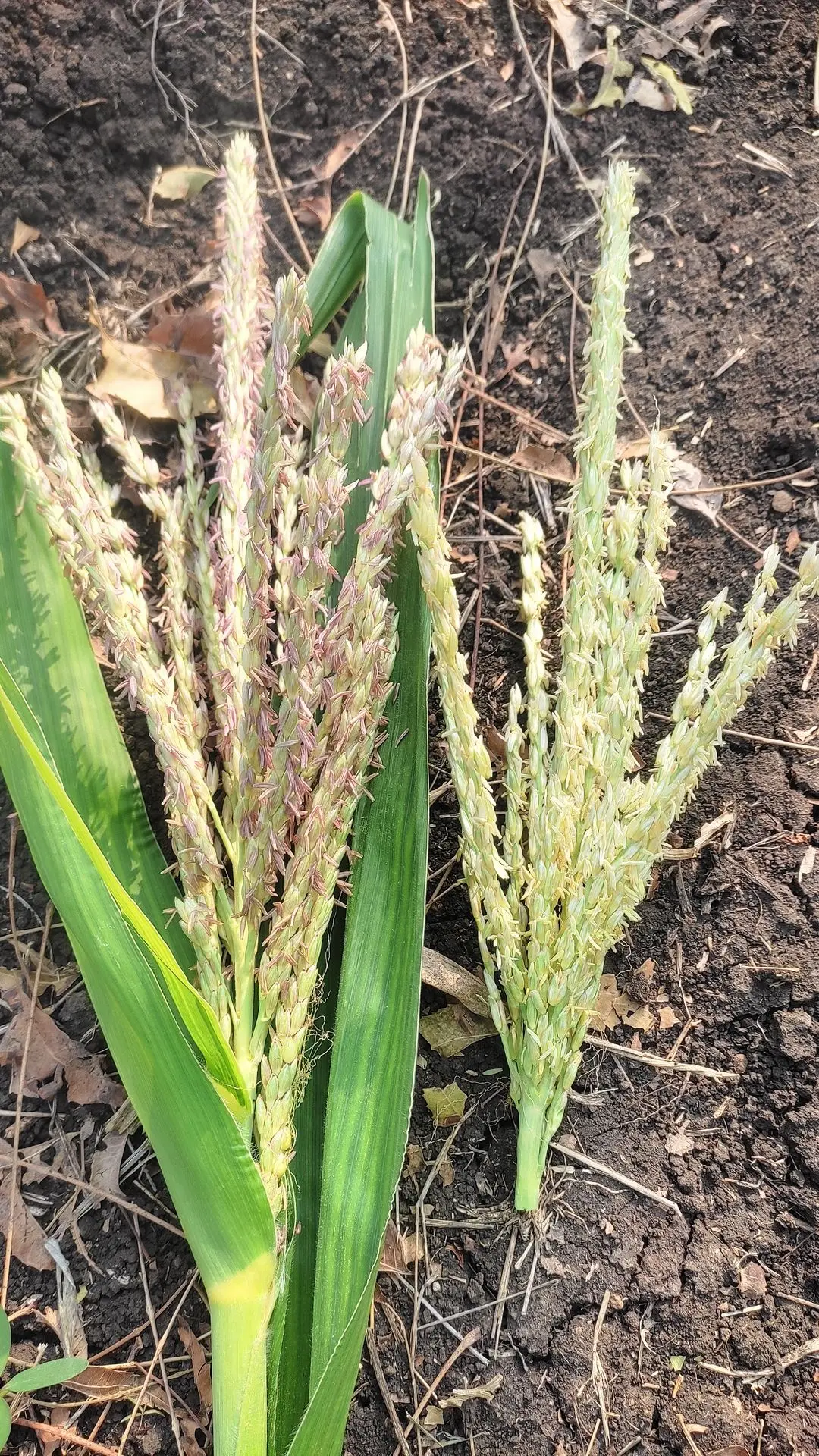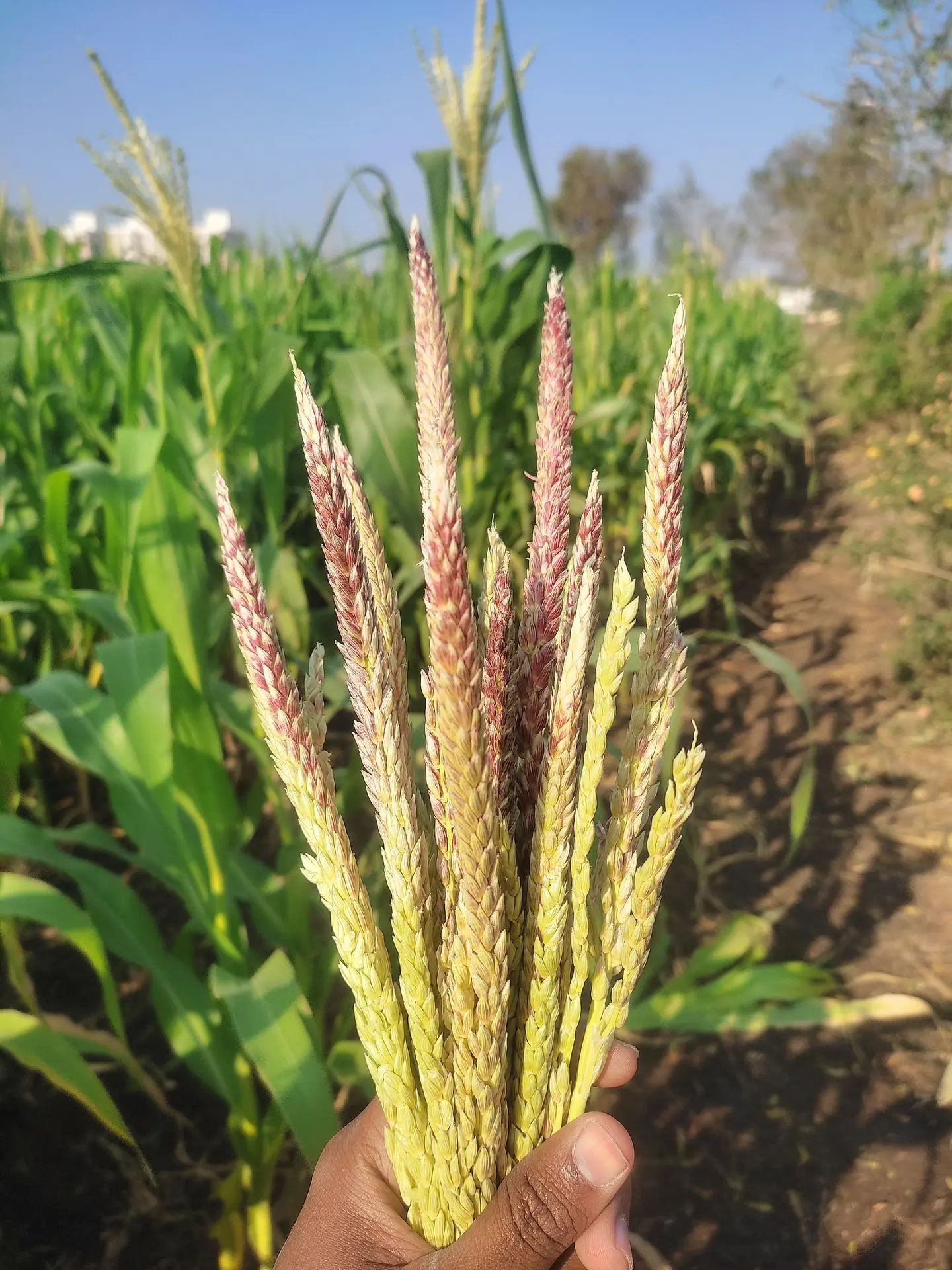Hybrid seed production is carried out during Rabi season at research farms and farmers fields by government organizations and private seed companies. While conducting hybrid seed production various factors should be considered, this will help to avoid mistakes and to ensure the production of genetically pure hybrid seed.
1. Staggering should be well managed
Staggering refers to planting of male and female parents of hybrids at different times to synchronize their flowering.
For optimum pollination, proper staggering between parents is important. If male tassel development doesn’t match with female silk emergence, pollination and seed set will be affected.
2. Suitable planting ratio
Planting ratio means proportion of male parental lines to female parental lines e.g. 4 female :1 male or 6 female : 1 male etc.
This ratio is depends upon amount of male parent producing pollens and it is adjusted to ensure adequate pollination to female rows.
3. Isolation distance
Isolation is used to avoid unwanted pollination from other hybrids or variety of maize crop.
Isolation distance of minimum 400m should be maintained from other maize crop hybrids. It is most crucial practice to produce genetically pure hybrid seed.
4. Removal of male plant after flowering
Male plants should be removed from hybrid seed production field after flowering is completed. This will avoid mixing of male cob in female after harvesting and genetic purity will be maintained.
5. Removal of offtype plants
It is important to remove all offtype plants from both male and female plants before flowering. If found during flowering, tassel should be covered with tassel bag to avoid pollination and plant should be uprooted and discarded along with female plants within 1m of diameter.

6) Detasseling
Detasseling is removal of female tassel before flowering to avoid pollination. This practice is important carry out carefully.
Detasseling should be done in female plants before anthesis. This is done early morning or evening to avoid anthesis by female tassel.
If any female plant with matured tassel found, should be taken off by covering it with tassel bag and plants within 1m area should be removed.

Additional Practices
1) Time isolation
Distance isolation is not possible at farmers field for seed production, so time isolation is option to be used.
Sowing should be done one month earlier or late to prevent unwanted cross pollination.
2) Flowering synchronization
Sometimes, despite proper staggering, flowering between male and female plants does not synchronize. If the male tassels have already started anthesis and the female cobs have not yet produced silks, cutting the tip of the cob with a sterilized pair of scissors can help promote earlier silk emergence and improve synchronization.
Cutting of cob tip
Next Day
Important note
The most important point that many farmers involved in hybrid seed production often overlook is that the cob size in female parent plants is naturally smaller, and grain filling may appear less compared to commercial hybrids. It is the responsibility of the organization to properly inform and educate farmers about these characteristics before and during seed production. This awareness helps prevent misunderstandings and conflicts after harvesting.
Conclusion
By following above guidelines along with cultivation practices, hybrid seed production can result in higher yield and genetically pure hybrid seed.
Also read मका खत व्यवस्थापन व झिंक सल्फेट वापरण्याची योग्य पद्धत and मका लागवड पद्धती

